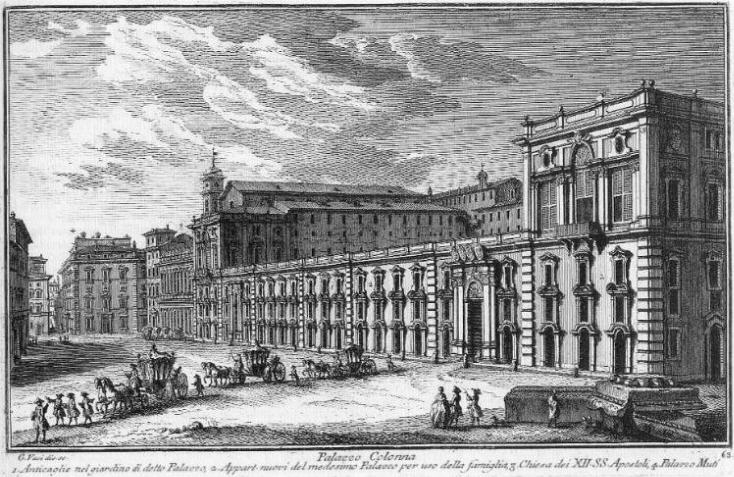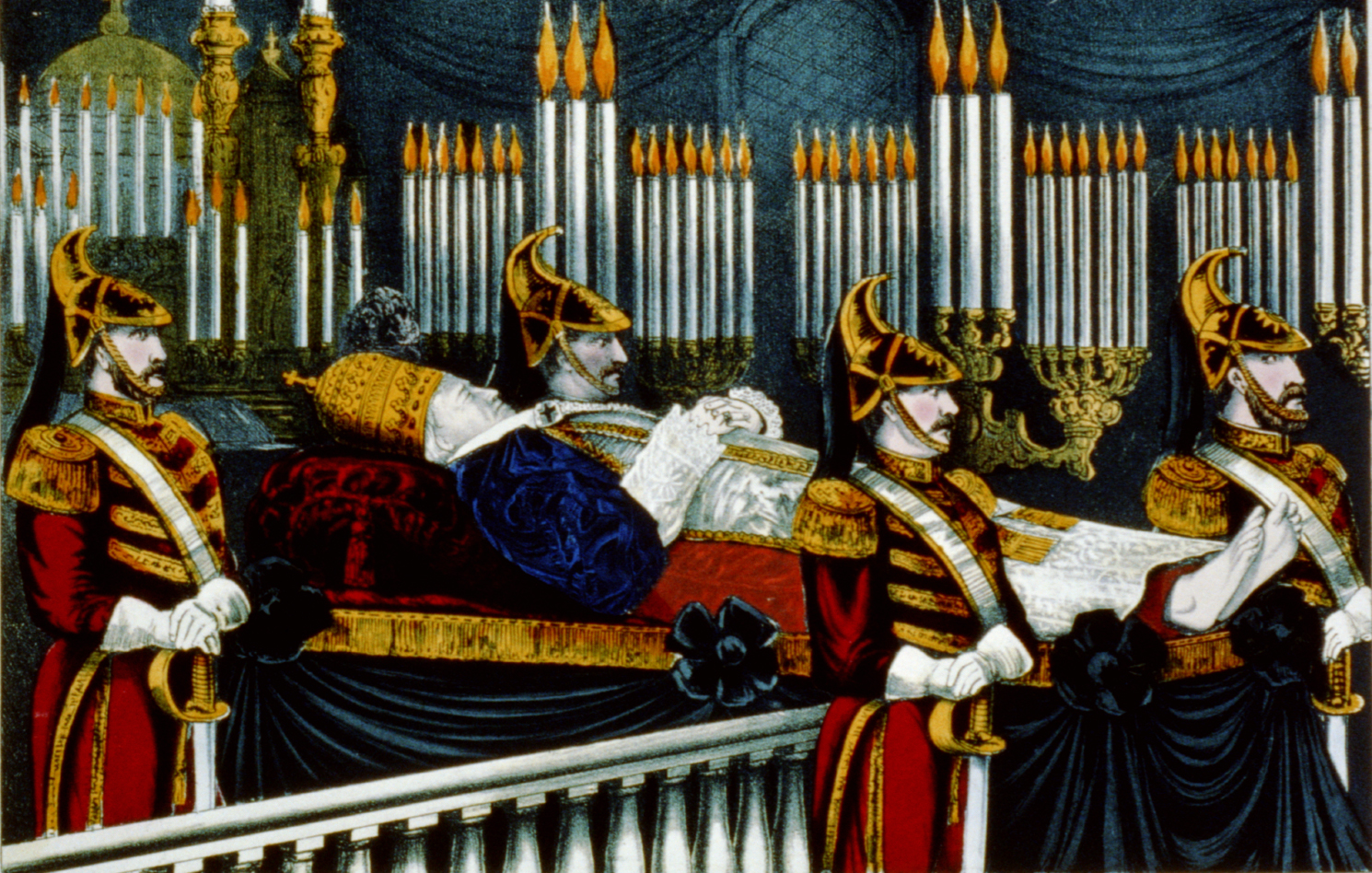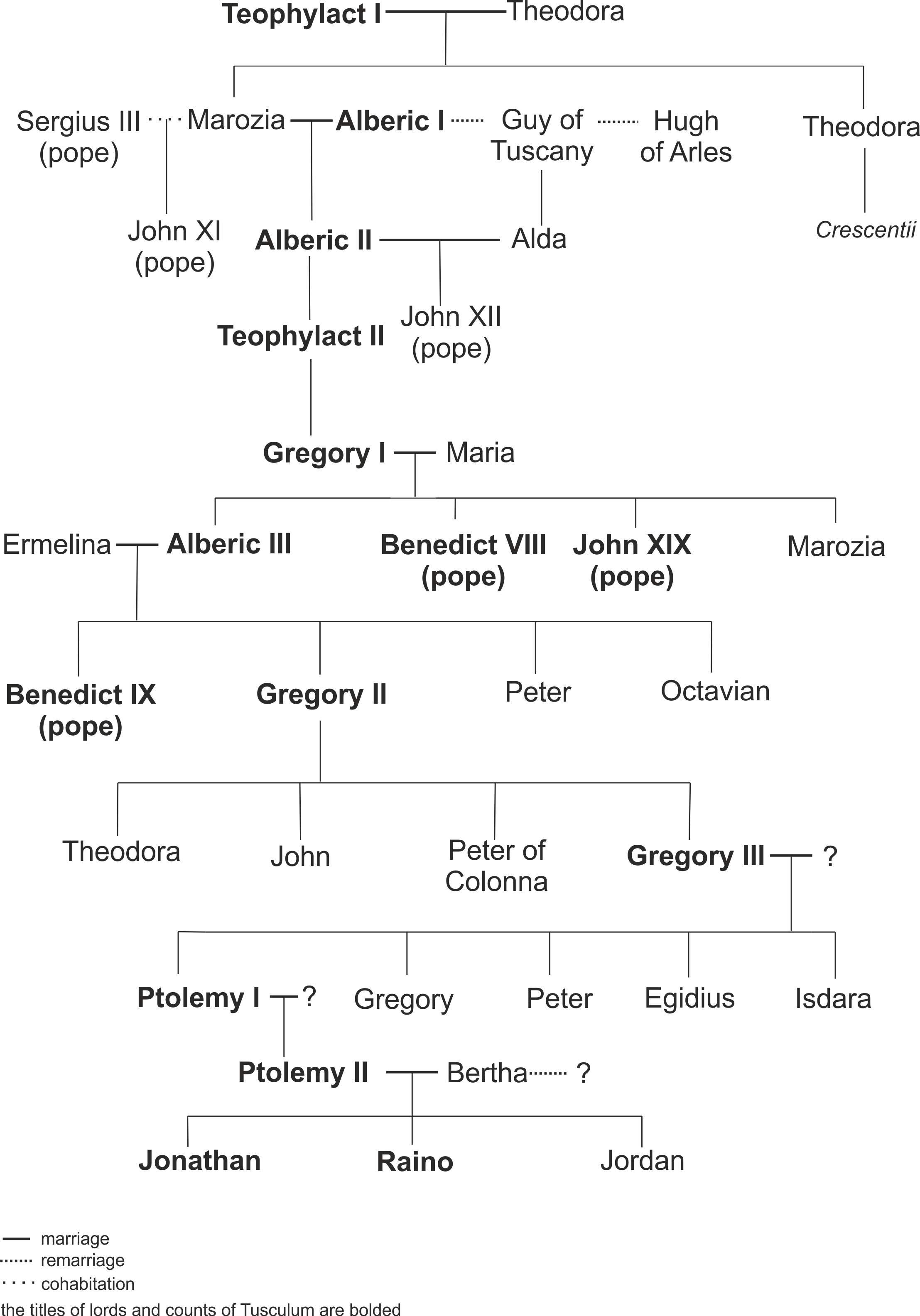|
Colonna
The House of Colonna, also known as ''Sciarrillo'' or ''Sciarra'', is an Italian noble family, forming part of the papal nobility. It was powerful in medieval and Renaissance Rome, supplying one pope (Martin V) and many other church and political leaders. The family is notable for its bitter feud with the Orsini family over influence in Rome, until it was stopped by papal bull in 1511. In 1571, the heads of both families married nieces of Pope Sixtus V. Thereafter, historians recorded that "no peace had been concluded between the princes of Christendom, in which they had not been included by name". History Origins According to tradition, the Colonna family is a branch of the Counts of Tusculum — by Peter (1099–1151) son of Gregory III, called Peter "de Columna" from his property the Columna Castle in Colonna, in the Alban Hills. Further back, they trace their lineage past the Counts of Tusculum via Lombard and Italo-Roman nobles, merchants, and clergy through the Early Mid ... [...More Info...] [...Related Items...] OR: [Wikipedia] [Google] [Baidu] |
Princes Of Paliano
The title Duke and Prince of Paliano is borne by the head of the elder line of the Colonna family. At times the honour has been borne by several members at once. The Princes also bear many other titles and honorifics. The Princes of Summonte are a cadet branch of the Princes of Paliano. Lords of PalianoSeEnciclopedia genealogica del Mediterraneo, COLONNA: LINEE DI PALIANO, TRAETTO E ZAGAROLO/ref> * Lorenzo Onofrio I Colonna (1417-1423) * Antonio Colonna (1423–1471) - son of Lorenzo Onofrio * Pietro Antonio Colonna (1471 - ) - son of Antonio *Prospero Colonna (1423–1463) - brother of Antonio * Odoardo Colonna (1423–1485) - brother of Antonio *Marcantonio I Colonna (1485–1522) - son of Pietro Antonio * Vespasiano Colonna (1522–1528) - grandson of Antonio; son of the ''condottiero'' Prospero Colonna * Fabrizio I Colonna (1485–1519) - son of Odoardo Dukes of Paliano *Fabrizio I Colonna (1519–1520) * Ascanio Colonna (1520–1556) - son of Fabrizio I * Giovanni Cara ... [...More Info...] [...Related Items...] OR: [Wikipedia] [Google] [Baidu] |
Palazzo Colonna
The Palazzo Colonna () is a palatial block of buildings in central Rome, Italy, at the base of the Quirinal Hill, and adjacent to the church of Santi Apostoli. It is built in part over the ruins of an old Roman serapeum, and it has belonged to the prominent Colonna family for over twenty generations. History The first part of the palace dates from the 13th century, and tradition holds that the building hosted Dante during his visit to Rome. The first documentary mention notes that the property hosted Cardinals Giovanni and Giacomo Colonna in the 13th century. It was also home to Cardinal Oddone Colonna before he ascended to the papacy as Pope Martin V in 1417. With his passing, the palace was sacked during feuds, and the main property passed into the hands of the Della Rovere family. It returned to the Colonna family when Marcantonio I Colonna married Lucrezia Gara Franciotti Della Rovere, the niece of Pope Julius II. The Colonna family's alliance to the Habsburg power likely ... [...More Info...] [...Related Items...] OR: [Wikipedia] [Google] [Baidu] |
Colonna, Italy
Colonna is a ''comune'' (municipality) in the Metropolitan City of Rome in the Italian region Latium, located about southeast of Rome, on the Alban Hills. With a population of some 4,300, it is the smallest of the Castelli Romani. History Ancient era The territory of Colonna is believed to have included the ancient community of Labici, located in the area of the modern comune of Monte Compatri. Labici was conquered in 418 BC by the Romans under the dictator Quintus Servilius Priscus Structus Fidenas and razed to the ground. The Labicani then founded Labicum Quintanas near the Tower of the Pasolina near Colonna. The place is noted as Ad Quintanas, a station on the Via Labicana, between Rome and Ad Bivium. Middle Ages ''Labicum Quintanas'' became an episcopal see in the 4th century. The inhabited area began to decay and disappeared with the Gothic War (535–554). Colonna is mentioned for the first time in 1047, in a deed of Henry III, Holy Roman Emperor, a guest at the cast ... [...More Info...] [...Related Items...] OR: [Wikipedia] [Google] [Baidu] |
Pope Martin V
Pope Martin V ( la, Martinus V; it, Martino V; January/February 1369 – 20 February 1431), born Otto (or Oddone) Colonna, was the head of the Catholic Church and ruler of the Papal States from 11 November 1417 to his death in February 1431. His election effectively ended the Western Schism of 1378–1417. He is the last pope to date to take on the pontifical name "Martin". Biography Oddone Colonna was born at Genazzano, the son of Agapito Colonna and Caterina Conti, between 26 January and 20 February, 1369. He belonged to one of the oldest and most distinguished families of Rome. His brother Giordano became Prince of Salerno and Duke of Venosa, while his sister Paola was Lady of Piombino between 1441 and 1445. Oddone studied law at the University of Pavia. He became apostolic protonotary under Pope Urban VI (1378–1389), and was created Cardinal-Deacon of San Giorgio in Velabro by Pope Innocent VII in 1405. In 1409 he took part in the Council of Pisa, and was one of the su ... [...More Info...] [...Related Items...] OR: [Wikipedia] [Google] [Baidu] |
Orsini-Colonna Castle
The Orsini-Colonna castle (Italian ''Castello Orsini-Colonna'') is a castle in Avezzano, Province of L'Aquila (Abruzzo). History Castello Orsini was constructed in 1490 by Virginio Orsini and, in 1565, it was adapted by Marcantonio Colonna in fortified residence. In 1915 it was deeply damaged by an earthquake. Following its restoration, now it is used as a picture gallery and multifunction space. Architecture The squared building is protected by four circular towers at each corner. A circular tower was also in the middle of the internal courtyard, now demolished. The castle had a moat and a drawbridge. The current main entrance was built by the Colonna family to celebrate the battle of Lepanto The Battle of Lepanto was a naval engagement that took place on 7 October 1571 when a fleet of the Holy League, a coalition of Catholic states (comprising Spain and its Italian territories, several independent Italian states, and the Soverei .... References External links ... [...More Info...] [...Related Items...] OR: [Wikipedia] [Google] [Baidu] |
Palestrina
Palestrina (ancient ''Praeneste''; grc, Πραίνεστος, ''Prainestos'') is a modern Italian city and ''comune'' (municipality) with a population of about 22,000, in Lazio, about east of Rome. It is connected to the latter by the Via Prenestina. It is built upon the ruins of the ancient city of Praeneste. Palestrina is the birthplace of composer Giovanni Pierluigi da Palestrina. Geography Palestrina is sited on a spur of the Monti Prenestini, a mountain range in the central Apennines. Modern Palestrina borders the following municipalities: Artena, Castel San Pietro Romano, Cave, Gallicano nel Lazio, Labico, Rocca di Cave, Rocca Priora, Rome, San Cesareo, Valmontone, Zagarolo. History Ancient Praeneste Ancient mythology connected the origin of Praeneste to Ulysses, or to other fabled characters such as Caeculus, Telegonus, Erulus or ''Praenestus''. The name probably derives from the word ''Praenesteus'', referring to its overlooking location. Early burials show that ... [...More Info...] [...Related Items...] OR: [Wikipedia] [Google] [Baidu] |
Black Nobility
The black nobility or black aristocracy ( it, nobiltà nera, aristocrazia nera) are Rome, Roman aristocracy, aristocratic families who sided with the Papacy under Pope Pius IX after the House of Savoy, Savoy family-led army of the Kingdom of Italy entered Rome on 20 September 1870, overthrew the Pope and the Papal States, and took over the Quirinal Palace, and any nobles subsequently ennobled by the Pope prior to the 1929 Lateran Treaty. For the next 59 years, the Pope confined himself to Vatican City and claimed to be a prisoner in the Vatican to avoid the appearance of accepting the authority of the new Italian government and state. Aristocrats who had been ennobled by the Pope and were formerly subjects of the Papal states, including the senior members of the Papal Court, kept the front doors of their palaces in Rome closed to mourn the Pope's confinement, which led to their being called the "black nobility". History Despite the relatively recent name, the Black Nobility ha ... [...More Info...] [...Related Items...] OR: [Wikipedia] [Google] [Baidu] |
Papal Nobility
The papal nobility are the aristocracy of the Holy See, composed of persons holding titles bestowed by the Pope. From the Middle Ages into the nineteenth century, the papacy held direct temporal power in the Papal States, and many titles of papal nobility were derived from fiefs with territorial privileges attached. During this time, the Pope also bestowed ancient civic titles such as Patrician (post-Roman Europe), patrician. Today, the Pope still exercises authority to grant titles with territorial designations, although these are purely nominal and the privileges enjoyed by the holders pertain to styles of address and heraldry. Additionally, the Pope grants personal and familial titles that carry no territorial designation. Their titles being merely honorific, the modern papal nobility includes descendants of ancient Roman families as well as notable Catholics from many different countries. All pontifical noble titles are within the personal gift of the pontiff, and are not recor ... [...More Info...] [...Related Items...] OR: [Wikipedia] [Google] [Baidu] |
Orsini Family
The House of Orsini is an Italian noble family that was one of the most influential princely families in medieval Italy and Renaissance Rome. Members of the Orsini family include five popes: Stephen II (752-757), Paul I (757-767), Celestine III (1191–1198), Nicholas III (1277–1280), and Benedict XIII (1724–1730). In addition, the family included 34 cardinals, numerous ''condottieri'', and other significant political and religious figures. Origins According to their own family legend, the Orsini are descended from the Julio-Claudian dynasty of ancient Rome. The Orsini carried on a political feud with the Colonna family for centuries in Rome, until it was stopped by Papal Bull in 1511. In 1571, the heads of both families married nieces of Pope Sixtus V as an act of reconciliation. Ironically the Colonna family also claims descent from the Julio-Claudian dynasty of ancient Rome. The Orsini descend from Cajo Orso Orsini who lived c. 600 CE. Five popes are descended f ... [...More Info...] [...Related Items...] OR: [Wikipedia] [Google] [Baidu] |
Rome
, established_title = Founded , established_date = 753 BC , founder = King Romulus (legendary) , image_map = Map of comune of Rome (metropolitan city of Capital Rome, region Lazio, Italy).svg , map_caption = The territory of the ''comune'' (''Roma Capitale'', in red) inside the Metropolitan City of Rome (''Città Metropolitana di Roma'', in yellow). The white spot in the centre is Vatican City. , pushpin_map = Italy#Europe , pushpin_map_caption = Location within Italy##Location within Europe , pushpin_relief = yes , coordinates = , coor_pinpoint = , subdivision_type = Country , subdivision_name = Italy , subdivision_type2 = Region , subdivision_name2 = Lazio , subdivision_type3 = Metropolitan city , subdivision_name3 = Rome Capital , government_footnotes= , government_type = Strong Mayor–Council , leader_title2 = Legislature , leader_name2 = Capitoline Assemb ... [...More Info...] [...Related Items...] OR: [Wikipedia] [Google] [Baidu] |
Gallicano Nel Lazio
Gallicano nel Lazio is a ''comune'' (municipality) in the Metropolitan City of Rome in the Italian region Latium, located about east of Rome at the feet of the Monti Prenestini. History In Roman times, it was known as Pedum. A castle is mentioned here in 984 AD, called ''Castrum Gallicani''. Here a Benedictine monastery grew in the following year, later owned by the abbey of San Paolo fuori le Mura. Gallicano from the 13th century it was a possession of the Colonna family, and pope Martin V (a Colonna) sojourned here in 1424. In 1501 the Borgia conquered it, although it was returned to the Colonna after the death of pope Alexander VI. The castle was destroyed in 1526 and rebuilt four years later. In 1622 the Ludovisi family The House of Ludovisi was an Italian noble family, originating from Bologna. They had close ties with the Papacy and were influential in the Papal States. Alessandro Ludovisi became a cardinal and later Pope Gregory XV. His cardinal-nephew was ... acquir ... [...More Info...] [...Related Items...] OR: [Wikipedia] [Google] [Baidu] |
Counts Of Tusculum
The counts of Tusculum, also known as the Theophylacti, were a family of secular noblemen from Latium that maintained a powerful position in Rome between the 10th and 12th centuries. Several popes and an antipope during the 11th century came from their ranks. They created and perfected the political formula of noble-papacy, wherein the pope was arranged to be elected only from the ranks of the Roman nobles. The Pornocracy, the period of influence by powerful female courtesans of the family, also influenced papal history. The counts of Tusculum remained arbiters of Roman politics and religion for more than a century. In addition to the papal influence, they held lay power through consulships and senatorial membership. Traditionally they were pro-Byzantine and anti-Germanic in their political affiliation. After 1049, the Tusculan Papacy came to an end with the appointment of Pope Leo IX. In fact, the Tusculan papacy was largely responsible for the reaction known as the Gregorian re ... [...More Info...] [...Related Items...] OR: [Wikipedia] [Google] [Baidu] |


